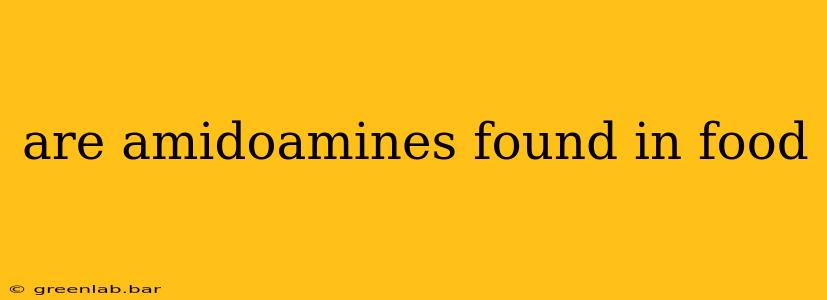Amidoamines are a class of chemical compounds that often spark curiosity, especially when considering their presence in food. This detailed exploration will clarify whether amidoamines are found in food and, if so, under what circumstances. Understanding their role and safety is crucial for informed consumer choices.
What are Amidoamines?
Before delving into their presence in food, let's define amidoamines. They are organic compounds containing both amide (-CONH-) and amine (-NH2) functional groups. The specific structure and properties vary significantly depending on the arrangement of these groups and other attached chemical components. This structural diversity leads to a wide range of applications, including in the food industry.
Amidoamines as Food Additives: The Complex Reality
The simple answer to the question "Are amidoamines found in food?" is a nuanced yes. However, it's crucial to understand the context. Amidoamines aren't typically added directly as standalone additives in the way that, say, preservatives or artificial sweeteners are. Instead, their presence often arises indirectly:
1. Components of Larger Molecules:
Many food additives and processing aids incorporate amidoamine structures as part of a larger, more complex molecule. These larger molecules may have entirely different functions and names than the amidoamine subunit they contain. For example, certain emulsifiers or stabilizers might contain amidoamine groups within their structure but are not primarily classified or labeled as such.
2. Byproducts of Processing:
Amidoamines might also form as minor byproducts during food processing. These byproducts are often present in trace amounts and may not pose a significant health concern. The formation of these byproducts depends heavily on the specific processing techniques employed. Research into the formation and levels of these byproducts is ongoing and specific to various food items and processing methods.
3. Naturally Occurring (Rare Instances):
While not common, some amidoamine-like structures could potentially occur naturally within certain foods. However, this is highly dependent on the specific food and requires further specialized analysis.
Safety and Regulation: A Matter of Context
The safety of amidoamines in food is not a blanket yes or no answer. As explained above, their occurrence is often indirect and as part of larger molecules. The safety assessment is, therefore, tied to the safety assessment of the larger compound or food product, not necessarily the amidoamine structure itself. Regulatory bodies like the FDA (in the United States) and EFSA (in Europe) carefully evaluate food additives and processing aids, ensuring they meet stringent safety standards before approval.
Further Research and Transparency
Because of the indirect nature of amidoamine presence in food, it's challenging to pinpoint specific examples without detailed chemical analysis of various food products. More research is needed to fully understand the extent and impact of any amidoamine byproducts generated during food processing. Transparency from food manufacturers regarding the chemical composition of additives and processing aids would greatly benefit consumers and researchers alike.
Conclusion: More Questions Than Answers?
While amidoamines may be found indirectly in some food products, determining their specific occurrence and potential health impact requires further investigation. The absence of widespread labeling or direct addition of amidoamines necessitates a deeper understanding of food processing chemistry and the comprehensive safety assessments performed by regulatory agencies. The context of their presence—as parts of larger molecules or minor byproducts—is crucial in determining their relevance to food safety.

